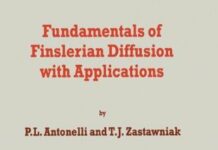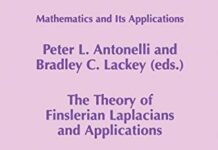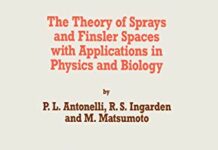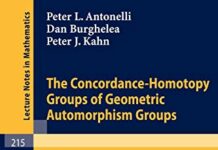
Ebook Info
- Published: 1996
- Number of pages: 290 pages
- Format: PDF
- File Size: 7.54 MB
- Authors: P.L. Antonelli
Description
Since 1992 Finsler geometry, Lagrange geometry and their applications to physics and biology, have been intensive1y studied in the context of a 5-year program called “Memorandum ofUnderstanding”, between the University of Alberta and “AL.1. CUZA” University in lasi, Romania. The conference, whose proceedings appear in this collection, belongs to that program and aims to provide a forum for an exchange of ideas and information on recent advances in this field. Besides the Canadian and Romanian researchers involved, the conference benefited from the participation of many specialists from Greece, Hungary and Japan. This proceedings is the second publication of our study group. The first was Lagrange Geometry. Finsler spaces and Noise Applied in Biology and Physics (1]. Lagrange geometry, which is concerned with regular Lagrangians not necessarily homogeneous with respect to the rate (i.e. velocities or production) variables, naturalIy extends Finsler geometry to alIow the study of, for example, metrical structures (i.e. energies) which are not homogeneous in these rates. Most Lagrangians arising in physics falI into this class, for example. Lagrange geometry and its applications in general relativity, unified field theories and re1ativistic optics has been developed mainly by R. Miron and his students and collaborators in Romania, while P. Antonelli and his associates have developed models in ecology, development and evolution and have rigorously laid the foundations ofFinsler diffusion theory [1] .
User’s Reviews
Editorial Reviews: Review ` … good insight into the current state-of-the-art of Finsler and Lagrange geometries. The volume has the following three main audiences: differential geometers, relativists, and workers in Lagrange dynamics. … can be recommended as a supplementary and more specialized text in the above mentioned topics.’ General Relativity and Gravitation, 29:9 (1997) From the Back Cover The differential geometry of a regular Lagrangian is more involved than that of classical kinetic energy and consequently is far from being Riemannian. Nevertheless, such geometries are playing an increasingly important role in a wide variety of problems in fields ranging from relativistic optics to ecology. The present collection of papers will serve to bring the reader up-to-date on the most recent advances. Subjects treated include higher order Lagrange geometry, the recent theory of (phi)-Lagrange manifolds, electromagnetic theory and neurophysiology. This book is recommended as a (supplementary) text in graduate courses in differential geometry and its applications, and will also be of interest to physicists and mathematical biologists.
Reviews from Amazon users which were colected at the time this book was published on the website:
⭐
⭐
Keywords
Free Download Lagrange and Finsler Geometry: Applications to Physics and Biology (Fundamental Theories of Physics, 76) 1996th Edition in PDF format
Lagrange and Finsler Geometry: Applications to Physics and Biology (Fundamental Theories of Physics, 76) 1996th Edition PDF Free Download
Download Lagrange and Finsler Geometry: Applications to Physics and Biology (Fundamental Theories of Physics, 76) 1996th Edition 1996 PDF Free
Lagrange and Finsler Geometry: Applications to Physics and Biology (Fundamental Theories of Physics, 76) 1996th Edition 1996 PDF Free Download
Download Lagrange and Finsler Geometry: Applications to Physics and Biology (Fundamental Theories of Physics, 76) 1996th Edition PDF
Free Download Ebook Lagrange and Finsler Geometry: Applications to Physics and Biology (Fundamental Theories of Physics, 76) 1996th Edition



